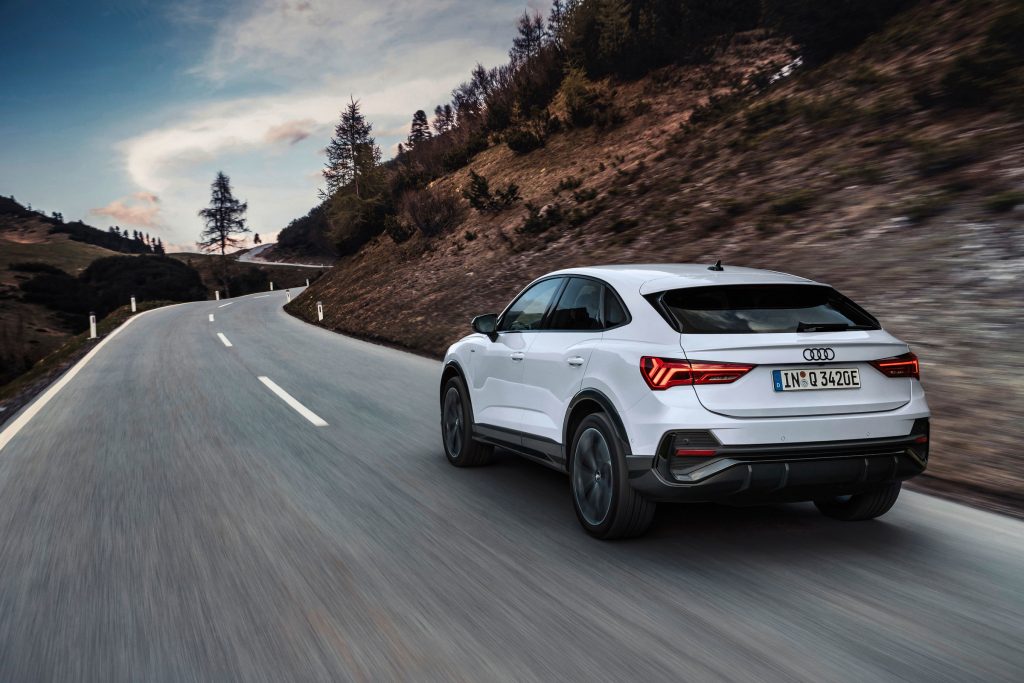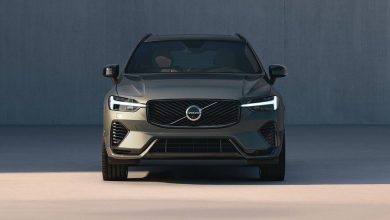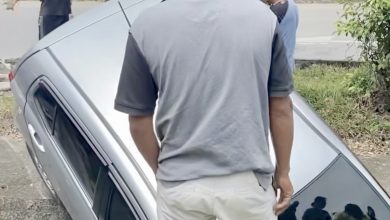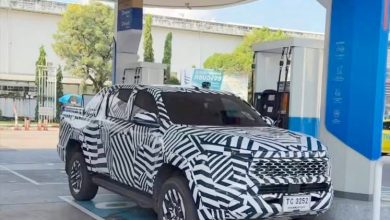Audi Q3 and Q3 Sportback 45 TFSI e Unveiled For Europe
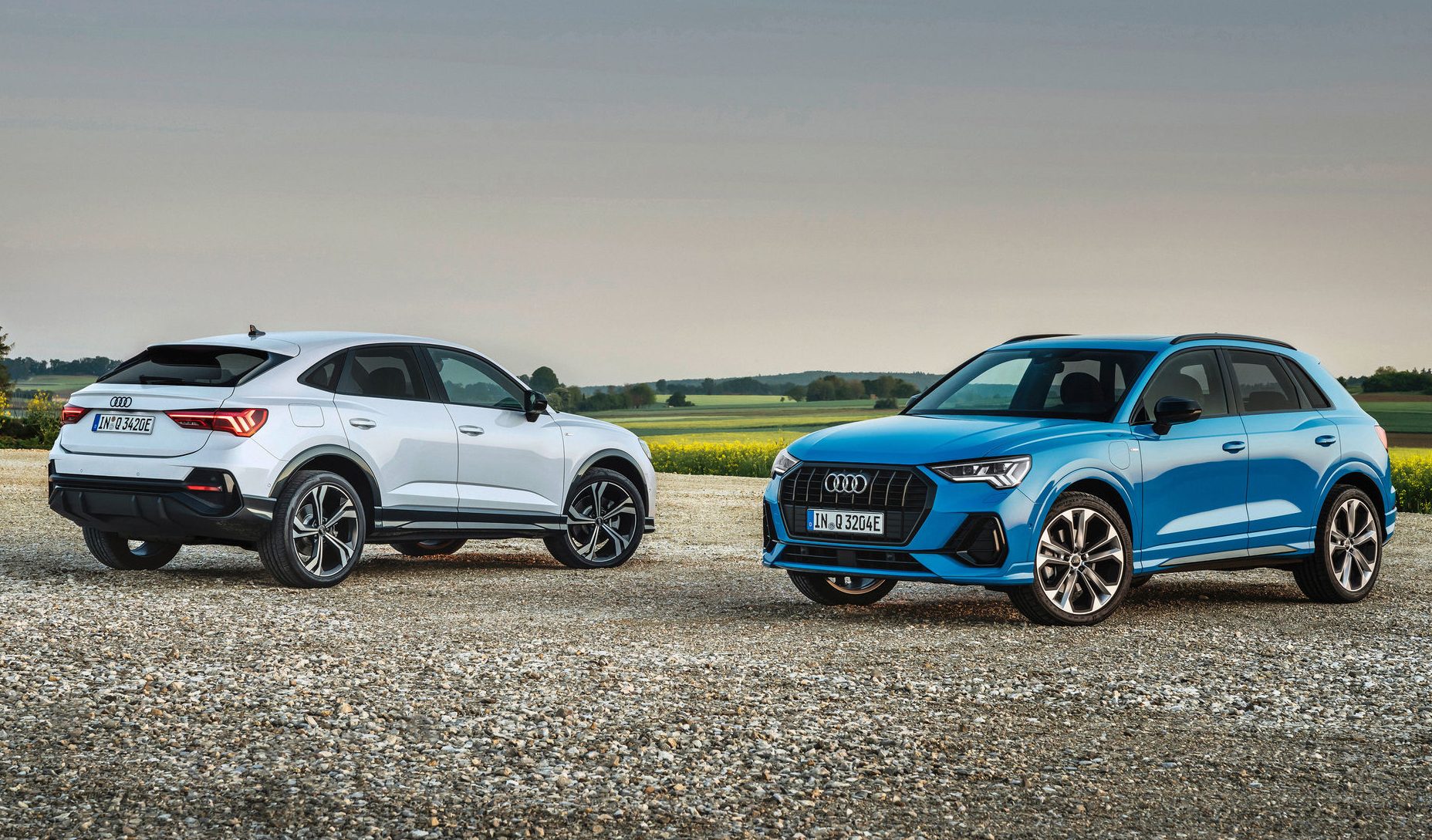
These electrified Audi compact SUVs will be available in normal and Sportback body styles.
Audi’s electrification offensive is set to continue into the new year, as it has just announced another brace of PHEVs with the unveiling of its Q3 and Q3 Sportback 45 TFSI e.
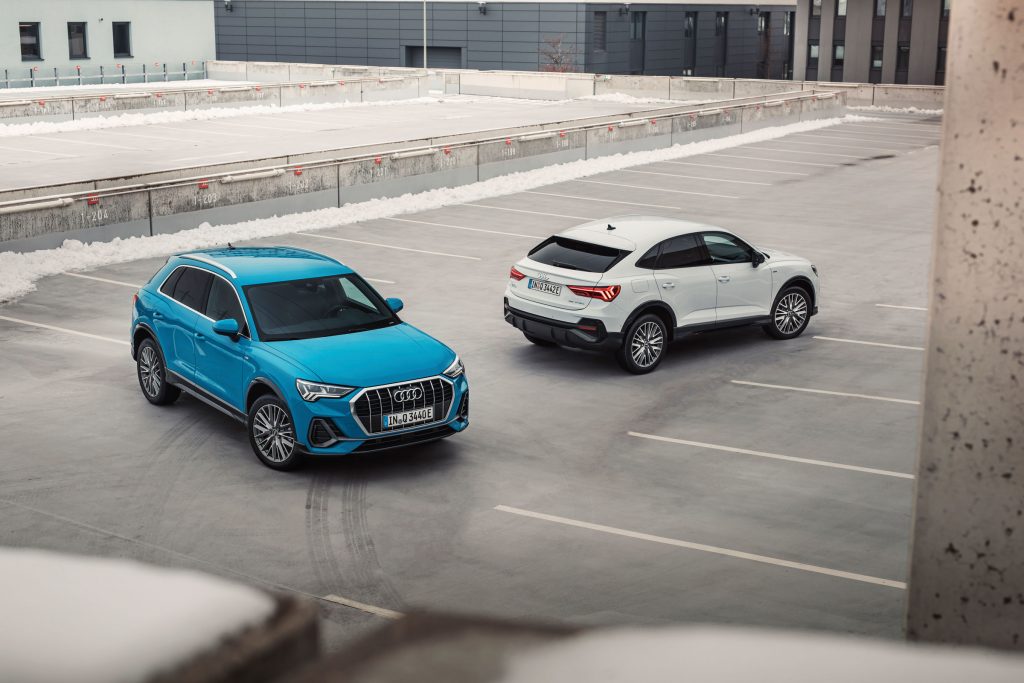
The first PHEV SUVs to be unveiled by the German automaker, these PHEV Q3 models come just a few weeks after the debut of its plug-in hybrid A3 Sportback 45 TFSI e. It is worth bringing up this PHEV hatchback because the same semi-sporty powertrain as in the aforementioned Audi hatchback now finds itself under the skin of its jacked up counterpart.
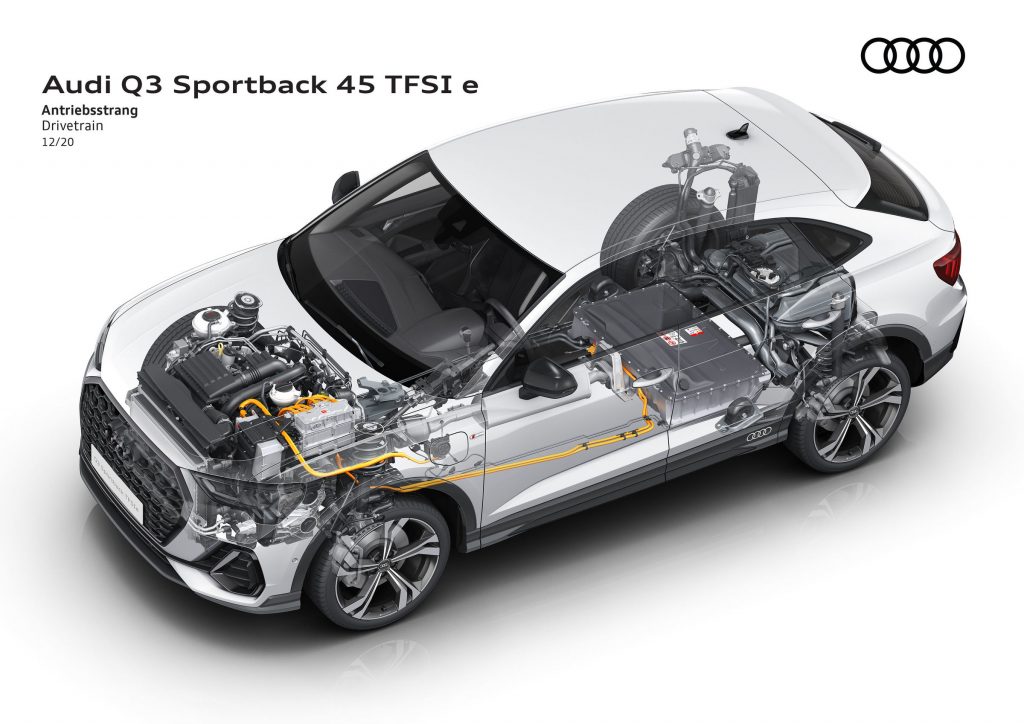
In very brief terms, this means that both body styles of front-wheel drive PHEV Q3 features a 1.4 TFSI turbocharged four-cylinder and a six-speed S Tronic dual-clutch transmission on the internal combustion end of things. On the electric end meanwhile, there is a permanently excited synchronous machine (aka electric motor) that integrated to said gearbox fed by a 13 kWh lithium ion battery pack.
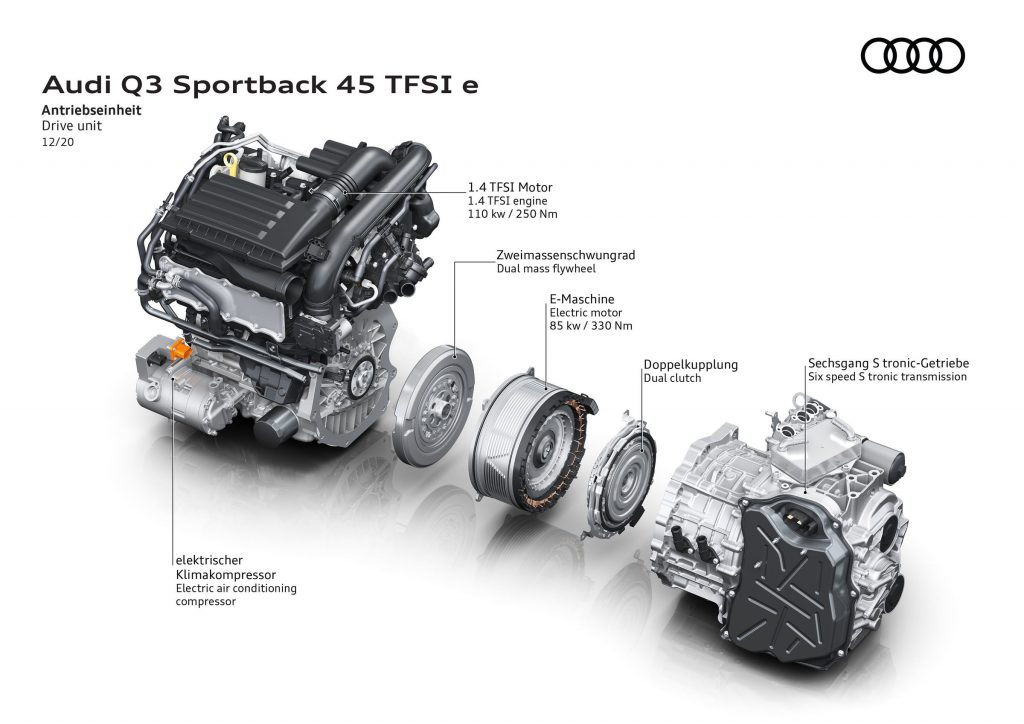
Since it is essentially the same powertrain as its 45 TFSI e hatchback brethren, both Q3 PHEVs therefore rated at the same combined power and torque output of 245 PS and 400 Nm of torque. Due to its all its added SUV-ness however, its performance figures are a tad weaker than the spry and sporty hatchback, with both achieving the century sprint in 7.3 seconds (+ 0.5 s of the A3) and a top speed of only 210 km/h (- 22 km/h of the A3).
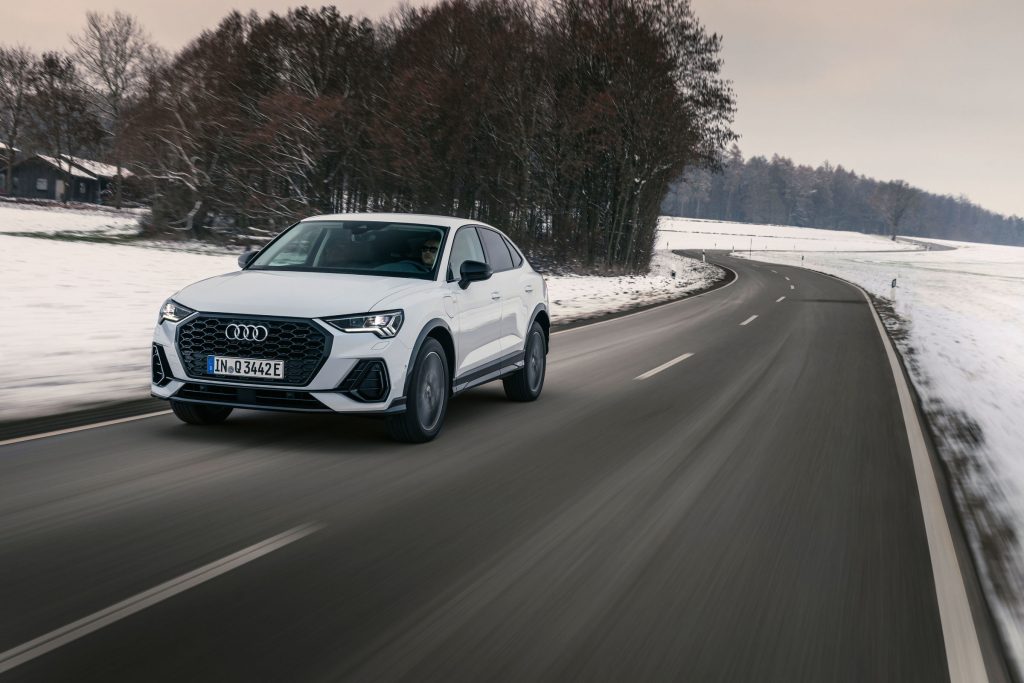
It is much the same story with its economy and emissions figures too, both of which are roughly 20% more than the A3. In terms of fuel economy, both body styles of PHEV Q3 manage 1.4 to 1.7 l/100 km. On the emissions front meanwhile, the normal Q3 is claimed to emit 32 to 39 g of CO2 per km, while the Sportback emits slightly less at 33 to 38 g of CO2 per km.
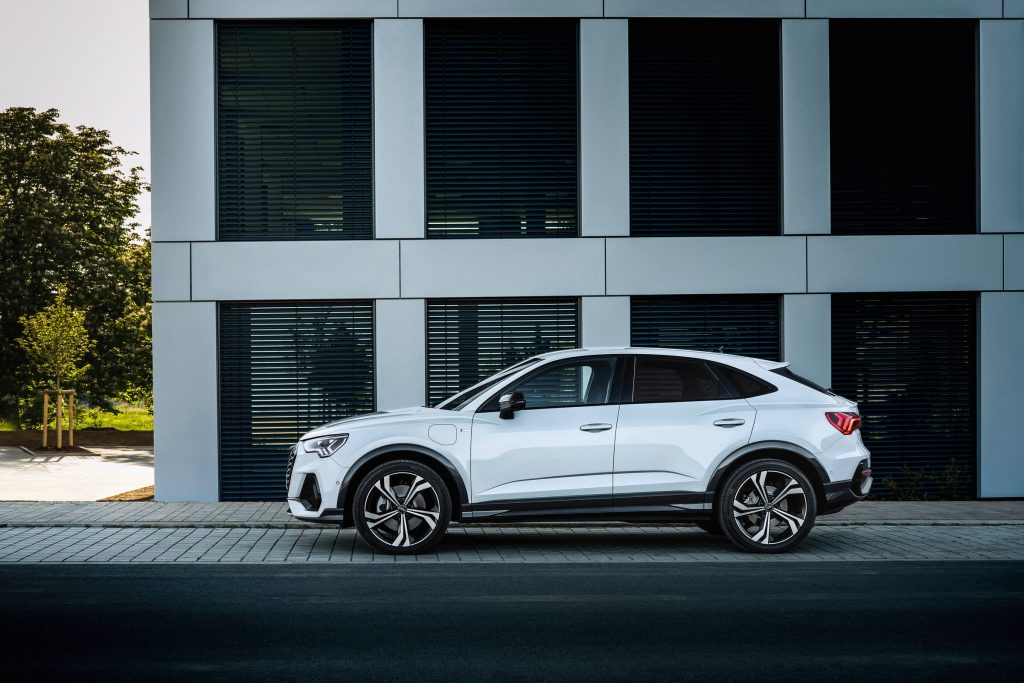
Despite having the same sized battery pack too, the PHEV Q3 has 50 km of all-electric range if the WLTP test is to be believed, with the more aerodynamic Sportback achieving a whole 1 km more. Having said that, the Q3 does have the ability for a faster charge rate at 3.6 kW compared to a maximum capacity of only 2.9 kW in the A3, which allows for the batteries to be topped up in just 3 hours and 45 minutes.

Speaking of charge, both body styles of the Q3 45 TFSI 45 e features the same 4 driving modes as in the A3: Auto Hybrid, Battery Hold, Battery Charge and Dynamic. Other highlights carried over from the semi-sporty hatchback includes the ability always starting up in all electric mode (except under extremely cold conditions) and regenerative braking capable of providing up to 0.3 g of braking force.
Coming standard with 17 inch wheels, with up to 20 inches being on the options list, both PHEV Audis actually ride slightly (+ 10 mm) higher than its conventionally powered counterparts. This is to provide the same ground clearance afforded by the normal Q3, due to the need for a cover plate protecting the low slung floor mounted battery packs of the PHEV variants.
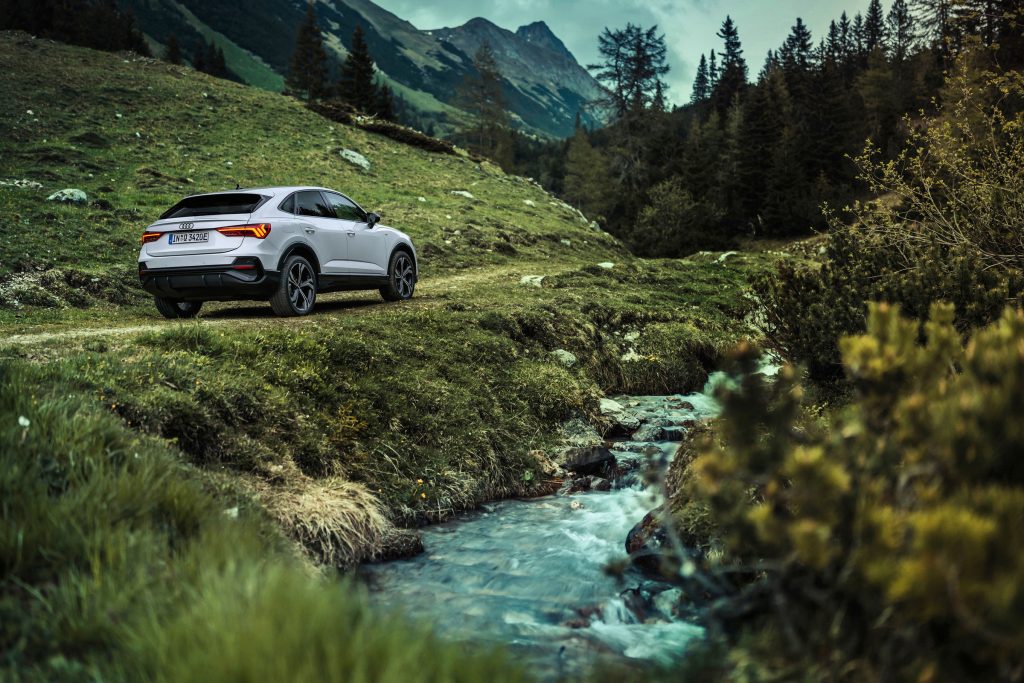
Being a relatively premium tier trim level within the Q3 model lineup, both Q3s are expectedly laden with premium features such as the 10.1-inch MMI central infotainment touchscreen, a digital instrument cluster and the Bang & Olufsen Premium Sound System with virtual 3D sound. All the prerequisite safety tech are found too on these PHEV SUVs, with Audi pre sense basic, Audi pre sense front, Audi side assist, and lane departure warning coming as standard.
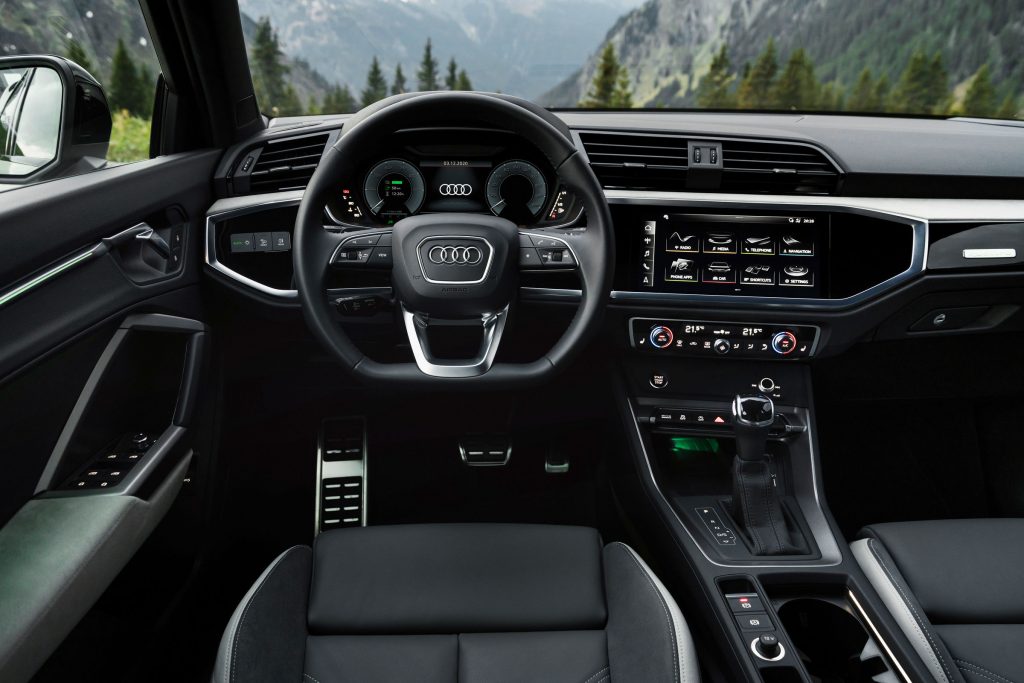
Available for pre-sale come the second week of January in Europe, the Audi Q3 45 TFSI e and Q3 Sportback 45 TFSI e will cost €46,000 (RM 228,000) and €47,400 (RM 235,000) respectively. A hefty price for a compact SUV, but both these models are applicable for a €6,750 (RM 34,000) government subsidy for buyers in Germany.
As for when this pair of compact Audi PHEV crossovers will arrive in Malaysia, seeing as the last Audi hybrid to arrive here was the A6 Hybrid all the way back in 2013, it is really a long shot to see this PHEV variant locally. Having said that, the conventionally powered Q3 and Q3 Sportback are both available currently in Audi dealerships nationwide.
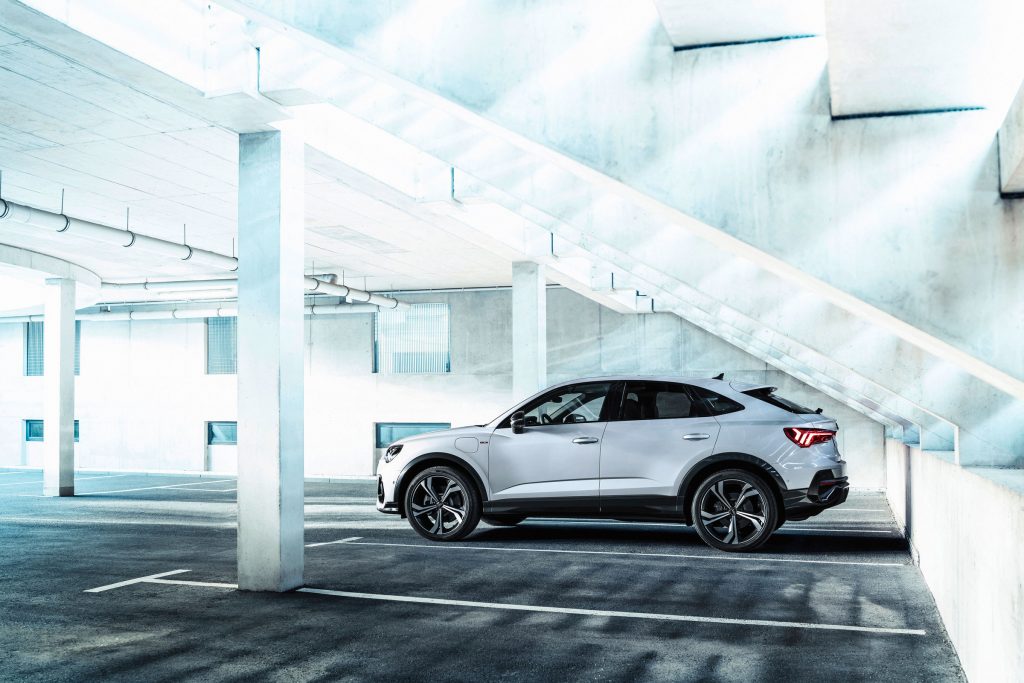
PRESS RELEASE: The combination of an electric driving experience, simple charging, and high level of suitability for everyday use makes Audi’s plug-in hybrid models especially appealing. The Q3 45 TFSI e and the Q3 Sportback 45 TFSI e complete the range of plug-in hybrids that Audi has brought onto the market since the middle of 2019. At the same time, these two compact SUVs mark the first step into the world of electrified Q models.
245 PS of system output, 13 kWh of energy capacity: the drive and the battery
The two Q3 models both include a 1.4 TFSI as the combustion engine. This four-cylinder delivers 110 kW (150 PS). The drive is completed by a permanently excited synchronous machine (PSM), which provides 85 KW of power. The PSM is integrated in the housing of the six-speed S tronic together with the separating clutch. This dual-clutch transmission, which transfers the power to the front wheels, integrates an electric oil pump. This ensures the supply and thus the function of the clutches and with that the gear selection even when the TFSI engine is switched off.
Great driving pleasure and high efficiency – the powertrain of these two new models offers both. The 1.4 TFSI and the electric motor together generate 180 kW of system output (245 PS) and system torque of 400 Nm (295.02 lb-ft). Both the Q3 45 TFSI e and the Sportback take 7.3 seconds to burst from 0 to 100 km/h (62.1 mph), and both reach a top speed of 210 km/h (130.5 mph). In the New European Driving Cycle, the consumption of the Q3 45 TFSI e is 1.7 to 1.4 liters of fuel per 100 km (138.4 to 168.0 US mpg) (39 to 32 grams of CO2 (62.8 to 51.5 g/mi)). The Q3 Sportback 45 TFSI e records the same values of 1.7 to 1.4 liters of fuel per 100 km (138.4 to 168.0 US mpg) (38 to 33 grams of CO2 (61.2 to 53.1 g/mi)). The total range achieved by both models is approximately 710 km (441.2 mi) – testifying to their great suitability for everyday use.
The high-voltage battery is located under the vehicle floor in front of the rear axle. Its 96 prismatic cells store 13.0 kWh of energy. It owes this high value to the compact and relatively lightweight battery of a new cell generation. The battery system has its own cooling circuit, which can be coupled to the air conditioning system’s circuit to ensure effective cooling even when requirements are at their highest.

Focus on efficiency: the drive management system
The drive management system of the compact SUV models is designed for high efficiency. Except in extremely cold conditions, the SUVs are always started in electric mode. Both plug-in models can cover up to 61 km (37.9 mi) with zero local emissions in the NEDC (51 km (31.7 mi) for the Q3 and 50 km (31.07 mi) for the Q3 Sportback in the WLTP). The maximum speed they can be driven at here is 140 km/h (87.0 mph). At low speeds, the AVAS (Acoustic Vehicle Alert System) generates the legally prescribed e-sound to warn other road users.
In “Auto-Hybrid” mode, the main operating mode, the drive management system divides the tasks between the 1.4 TFSI and the electric motor intelligently and efficiently. The electric motor supports the four-cylinder engine in many situations, for example when passing. When accelerating from low rotational speeds, for example, it applies the high torque that it generates due to its operating principle to bridge the few tenths of a second that the turbocharger needs to build up pressure – its deployment is imperceptible, but efficient. Drivers can prioritize electric drive with the EV button. The drive management system constantly evaluates numerous data points, including the route information from the navigation system and the data about the near surroundings from the vehicle sensors. This allows it to identify when the car is approaching a town sign, a speed limit or a roundabout, or getting too close to the vehicle ahead. When the foot is taken off the accelerator, the Audi Q3 45 TFSI e and the Q3 Sportback 45 TFSI e start to coast with the TFSI switched off in most situations.
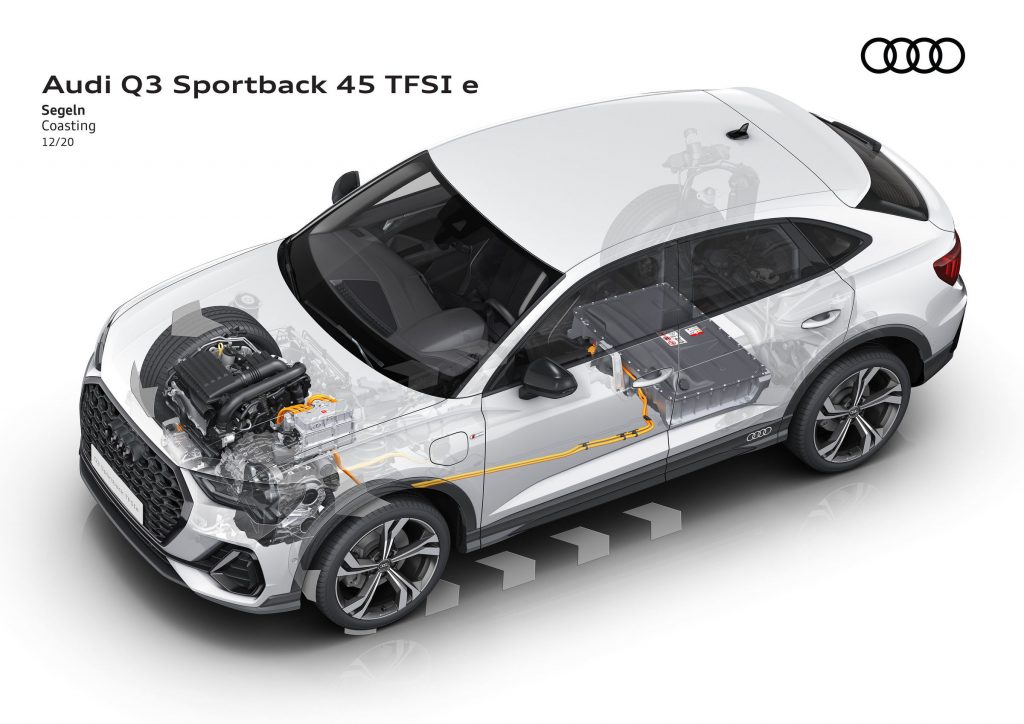
The right mode for the right requirements: “Hold”, “Charge” and dynamic
Regardless of the intelligence of the drive management system, the driver always remains in control. By pushing the EV button, they can switch between auto hybrid and electric-powered driving, while a menu opens in the MMI operating system at the same time that offers two additional special driving modes: “Battery Hold” and “Battery Charge”. These serve to keep the battery charge at the current level or to increase the state of charge. What’s more, the driver can influence the character of the drive using the Audi drive select dynamic handling system. By selecting the dynamic profile here, setting the S tronic to “S”, and flooring the accelerator, they get the full torque of the electric motor of 330 Nm (243.4 lb-ft) available to them for up to 10 seconds. As soon as they take their foot of the gas, the electric motor switches to recuperation and recovers energy in generator mode. In this way, the vehicle can also decelerate quickly thanks to its electric motor.
Irrespective of the driving profile, both models always recuperate when the driver steps on the brakes. Up to around 0.3 g – i.e. in the vast majority of brake operations in everyday driving – the electric motor performs the deceleration alone. It is only when the brake pedal is applied more heavily that the hydraulic wheel brakes come into play, activated by an electric brake servo. Thanks to the precise blending, the transition is practically undetectable, and the recuperation remains active. During braking, the system can recover up to 40 kW of power through the electric motor and store this in the battery.
With its balanced character, the suspension of the compact SUVs provides an excellent partner for the drive. The standard Audi drive select system adds even more facets to the driving experience – as it accesses not only the engines but also systems such as S tronic and power steering. In addition to dynamic mode, it also offers the comfort, auto, and individual profiles. The two plug-in hybrids drive on 17-inch alloy wheels as standard, but wheels 18, 19 and 20 inches in diameter are also available as options. The body of these SUVs is 10 mm (0.4 in) higher than that of the Q3 models with conventional drive systems – which means the ground clearance remains the same despite the cover plate for the battery.
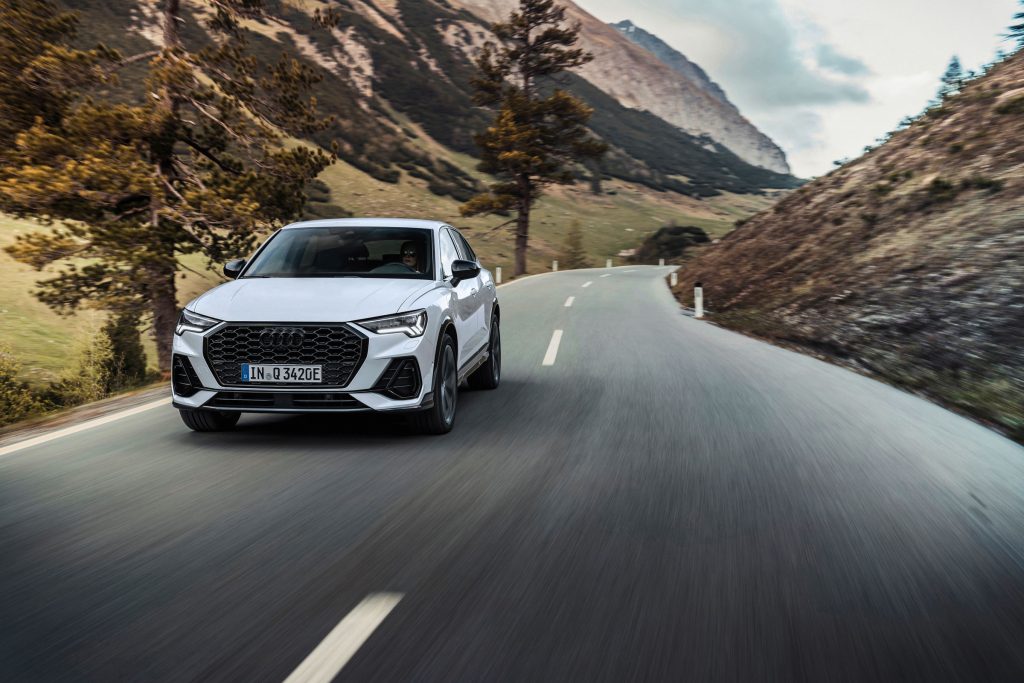
Fully charged in 3 h 45 min: charging at home and on the go
The Audi Q3 45 TFSI e and the Q3 Sportback 45 TFSI e can be charged using alternating current (AC) at a 400 V socket with an output of 3.6 kW. An empty battery can be recharged in 3 h 45 min using the standard power charging cable in this way. The free myAudi app allows the customer to control the charging, the timer and the pre-entry climate control remotely from their smartphone. Audi customers can choose to supply their house and garage with electricity from Volkswagen Naturstrom, which is generated completely from renewable sources. The compact plug-in hybrids require a mode 3 cable for charging at public AC charging terminals. The e-tron Charging Service, which covers the majority of countries in Europe, offers great convenience here: With a single card, the customer gains access to more than 155,000 charging points.

Sporty and versatile: design and interior
Both the new Q3 models impress with a powerful and sporty stance on the road. The interior is generous and variable. The front seats offer excellent comfort and a sporty seating position. The rear seats can be moved lengthwise as standard; their backrests are divided into three sections and recline at seven different angles. The luggage compartment has a basic volume of 380 l (13.4 cu ft), which increases to 1,375 l (48.6 cu ft) in the Q3 45 TFSI e and 1,250 l (44.1 cu ft) in the Q3 Sportback 45 TFSI e when the seats are folded down. As an option, Audi will deliver an electric tailgate that can also be opened with a foot motion.

Two displays form the basis of the operating and display concept. The MMI touch with a 10.1 inch screen takes up a central position in the instrument panel and displays the energy flows of the hybrid drive and more. The driver can look either at a digital instrument cluster or at the Audi virtual cockpit, which is available in two sizes. A powermeter displays the system’s output, the status of the drive, the recuperation, the battery’s state of charge, and the range. Many functions can be operated through a natural-language voice control as a further input level, which also offers the option of accessing the knowledge of the cloud.

Highly networked: Audi connect
Together with the top-of-the-line MMI Navigation plus infotainment system as an option, the online services of Audi connect can also be accessed on board. They include the Car-to-X services, which make use of the principle of swarm intelligence: Information on roadside parking spaces, hazards, speed limits and traffic light phases is exchanged through the networking of the Audi fleet. The myAudi app tightly connects the car with the customer’s smartphone. Hardware modules such as the Audi phone box and the Bang & Olufsen Premium Sound System with virtual 3D sound complete the infotainment program.
The driver assist systems come from the premium class. They include the adaptive cruise assist (optional), which assists the driver with longitudinal and lateral control – substantially enhancing comfort on long journeys in particular. In order to maintain lateral guidance, the driver needs to apply just a gentle touch to the capacitive steering wheel, which is part of the system, to prove that they are paying attention. The Audi pre sense basic, Audi pre sense front, Audi side assist, and lane departure warning come as standard.
Prices from EUR 46,000: The plug-in Q3 can be ordered from January 2021.
Presales of the Audi Q3 45 TFSI e and the Q3 Sportback 45 TFSI e will begin in the second week of January 2021. The base prices in Germany are EUR 46,000 and EUR 47,400 (including 19 percent value added tax). In addition to the features already mentioned, the extensive standard equipment includes LED headlights, two-zone automatic air conditioning, and auxiliary climate control. Customers are entitled to a subsidy of EUR 6,750. As company cars, both plug-in hybrid models are taxed only at a flat rate of 0.5% of the gross list price.
